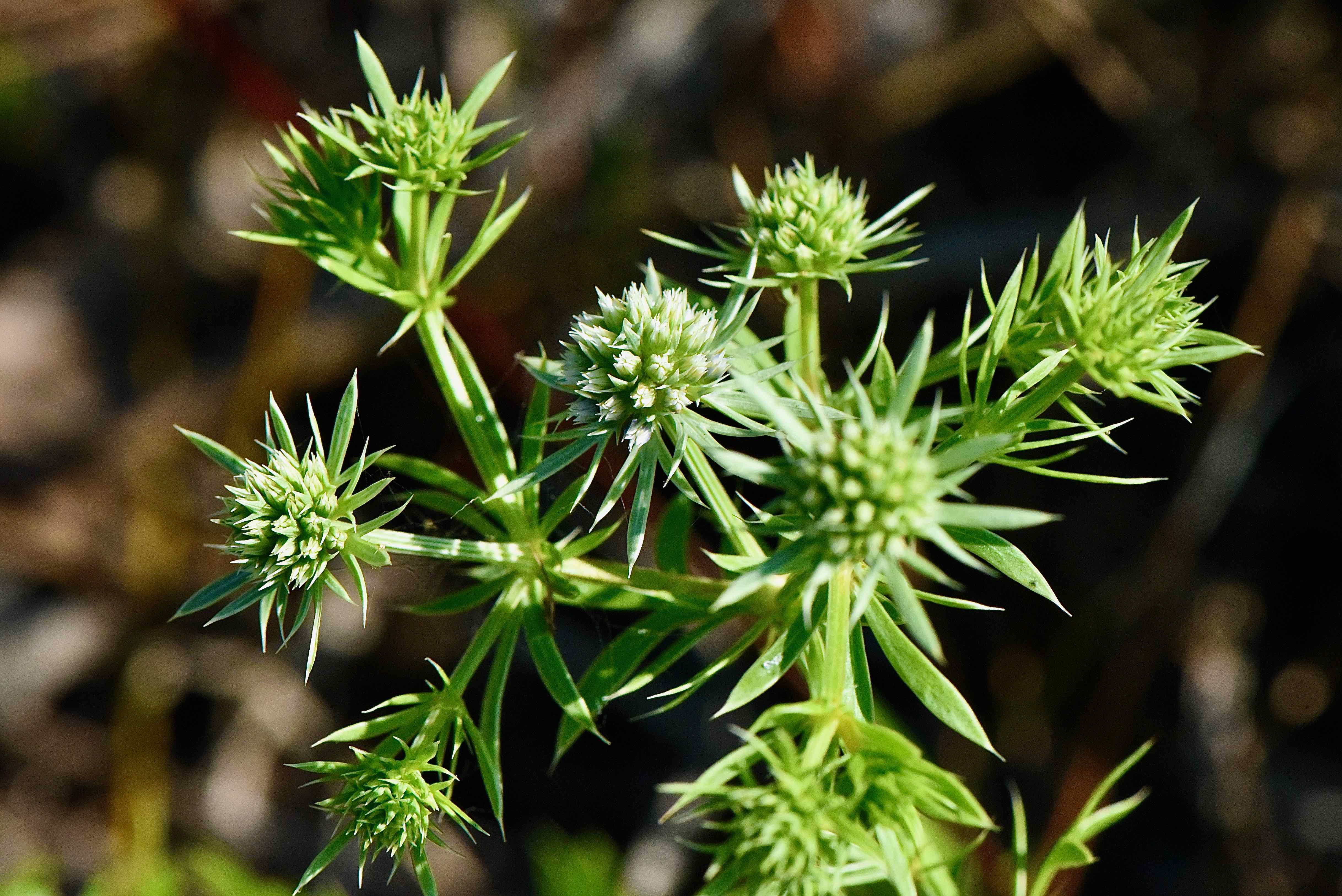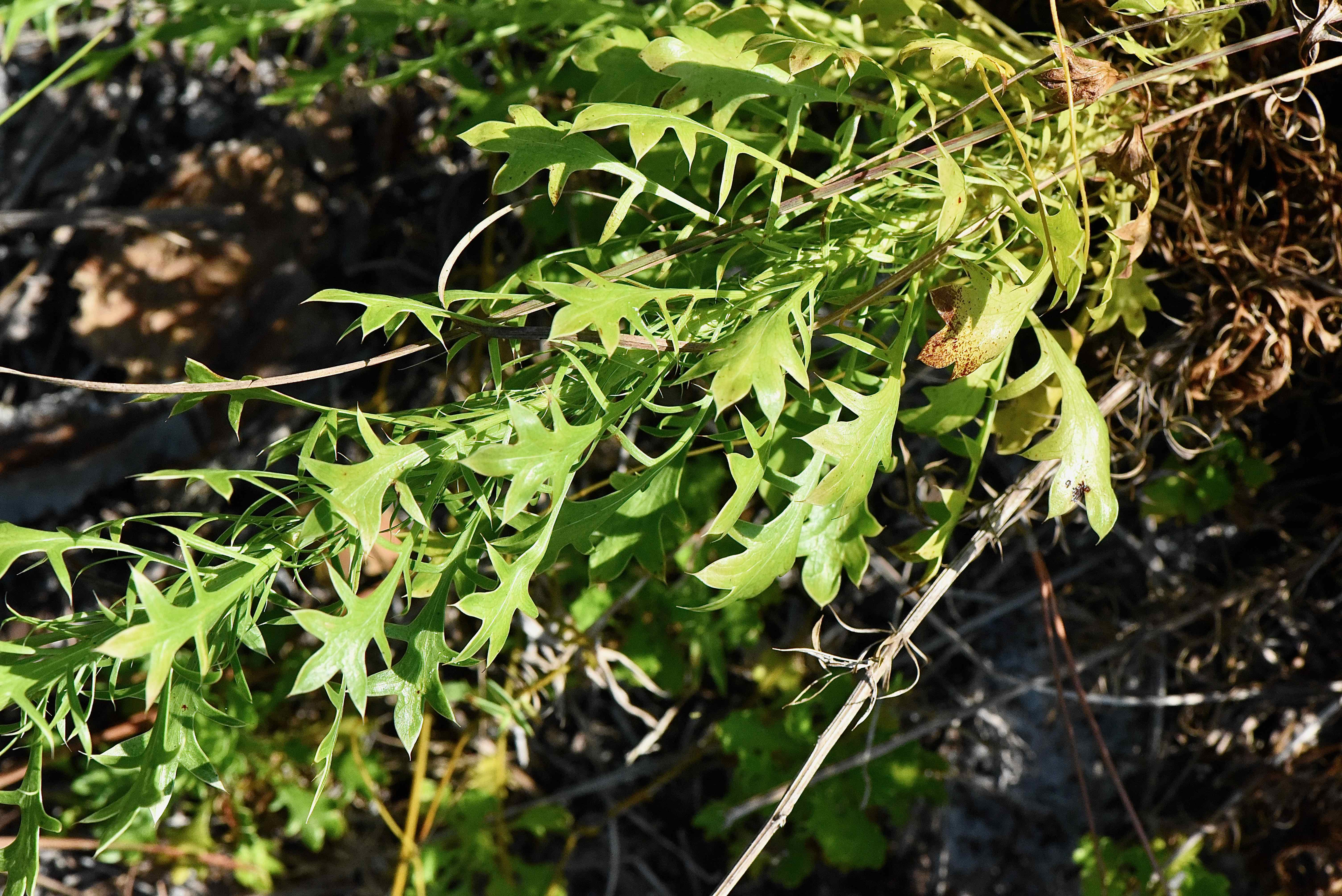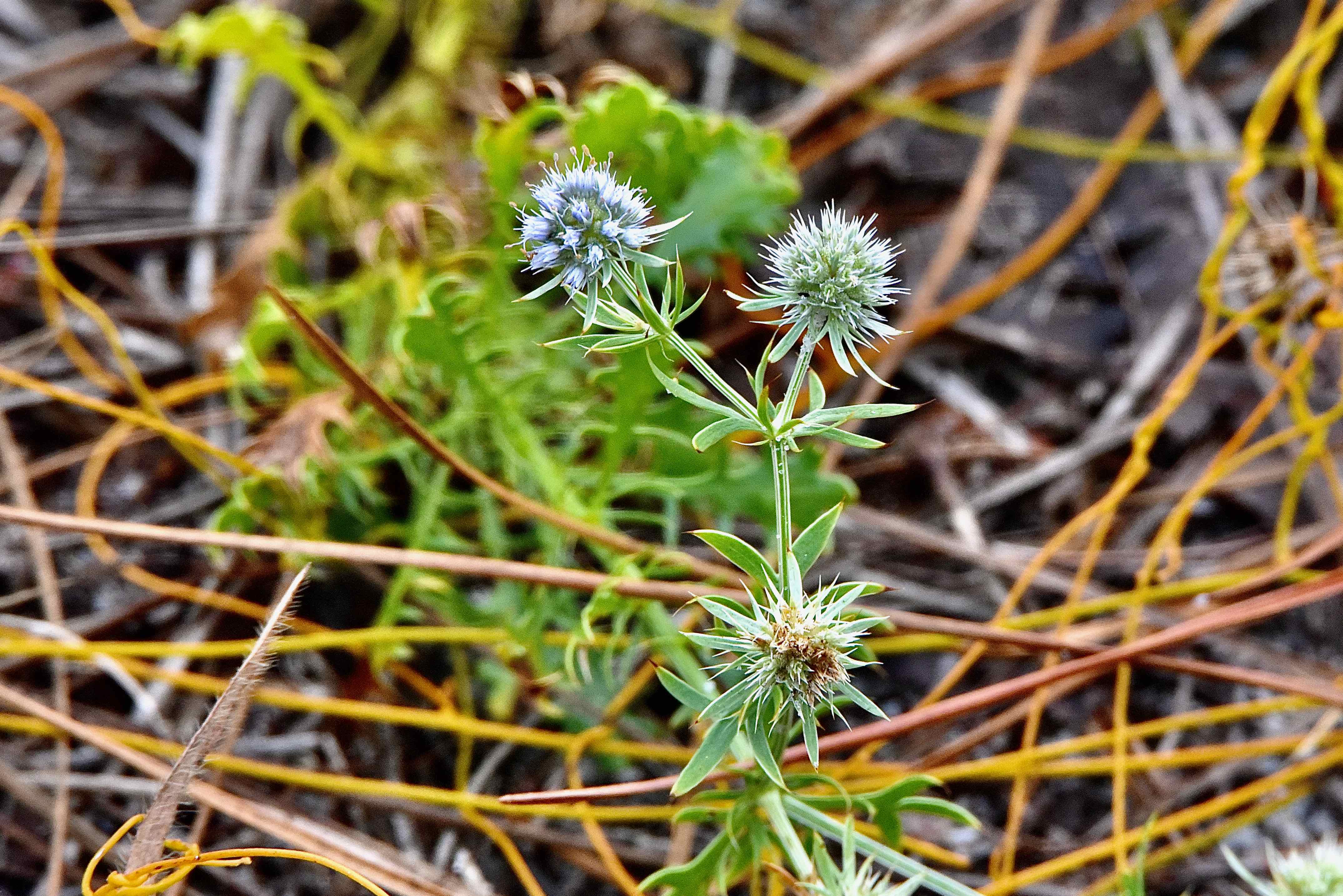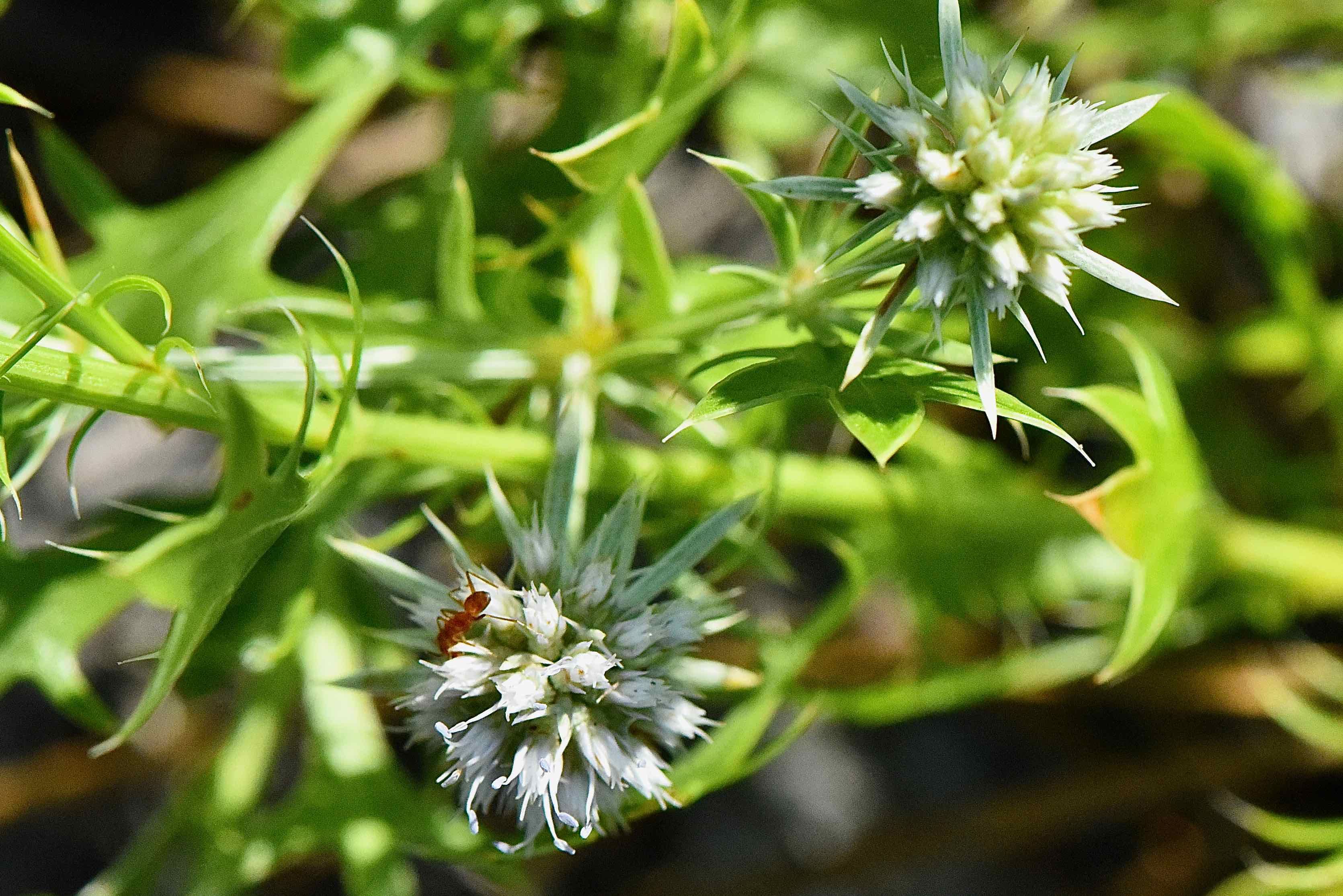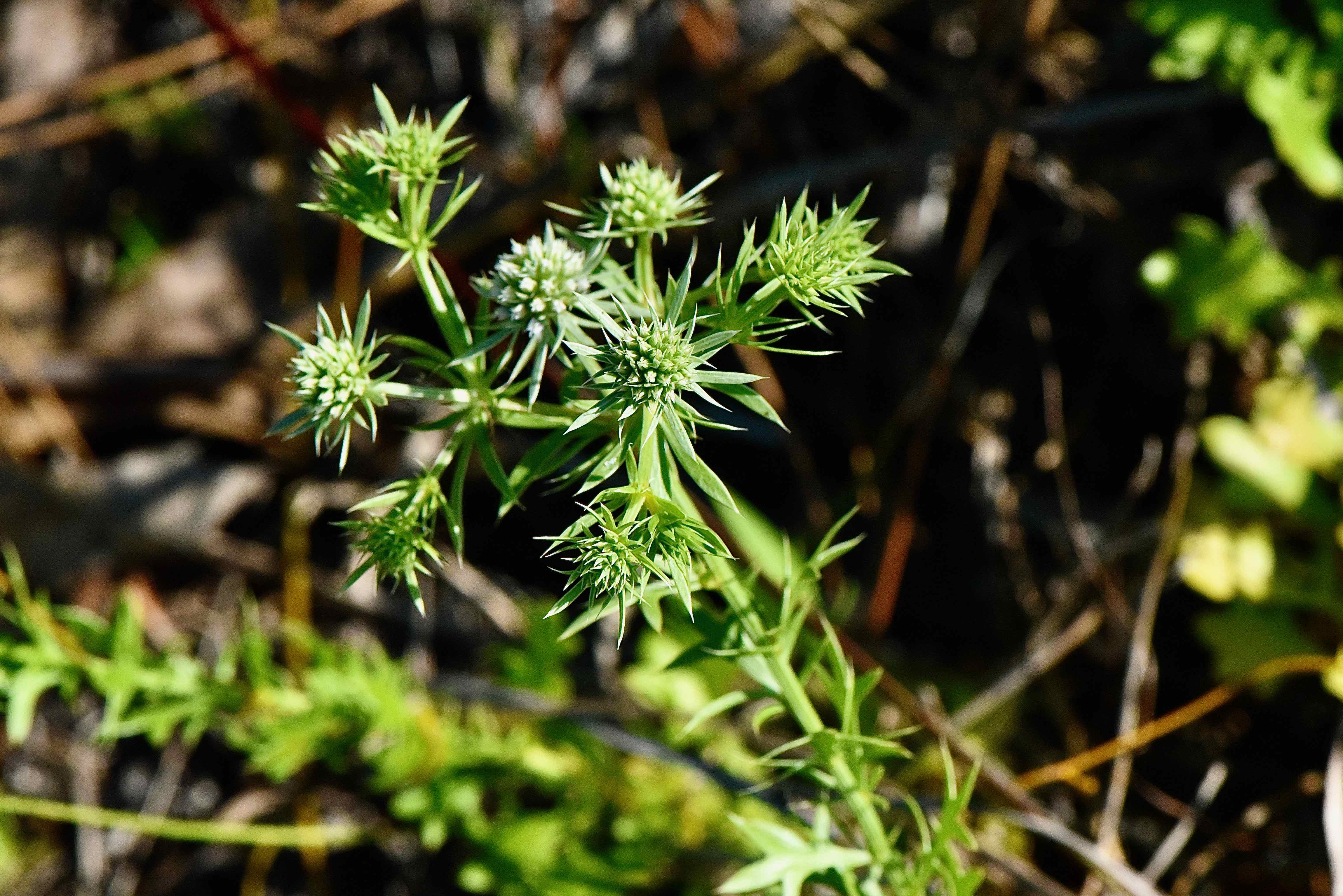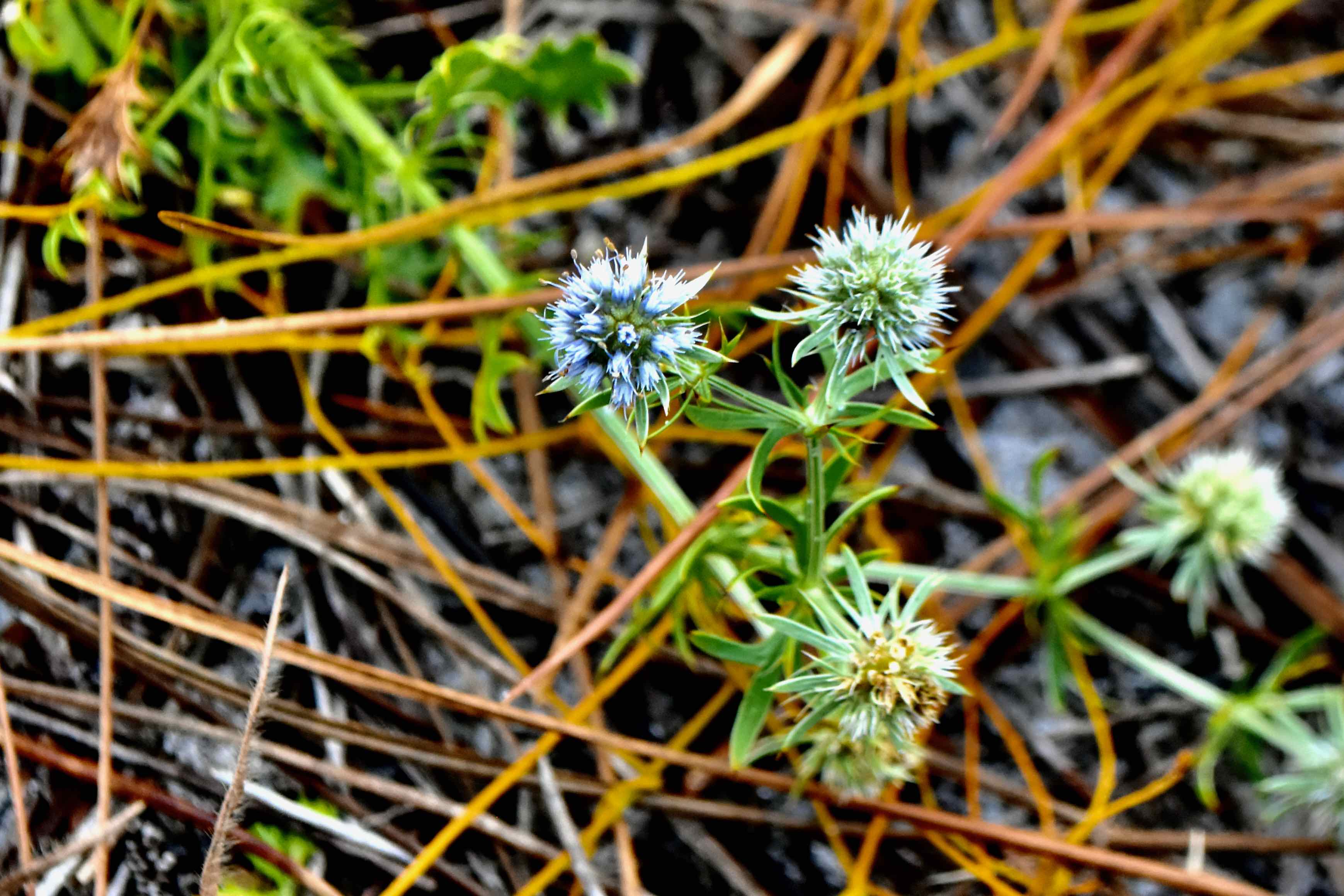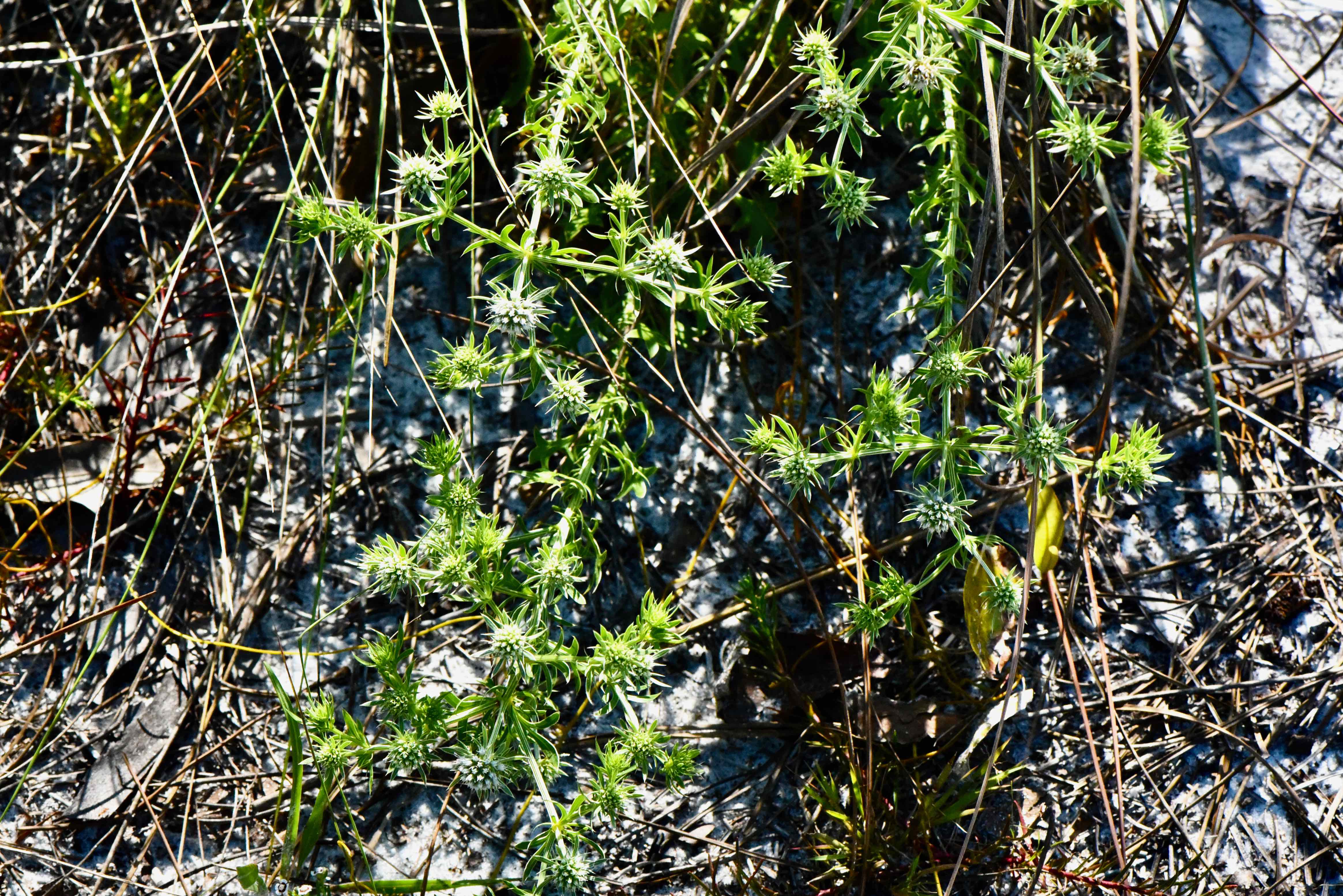
Fragrant eryngo, photographed at Jonathan Dickinson State Park, Hobe Sound, Martin County, in June 2022.
The thing with fragrant eryngo, Eryngium aromaticum that first catches our attention isn’t the fragrance, which we have to admit has escaped our nostrils undetected. It’s the plant’s unusual looks.
The leaves look like spaghetti servers, the flowerheads bristly balls. We’ve read that it’s the leaves that are the source of fragrant eryngo’s alleged sweet smell; we’ve also read it’s the flowers. Maybe it’s both, but in either case, the fragrance has eluded us.
Fragrant eryngo is a perennial Florida native found throughout most of the Peninsula save Monroe County in South Florida, and in parts of the Panhandle. It’s also found in Georgia and Alabama.
It’s one of more than 200 members of the eryngium genus found worldwide, including five that are native to South Florida, according to the Institute for Regional Conservation. (One, Rattlesnakemaster, E aquaticum, is believed to be extinct within the region, the IRC reports.)
Many are used medicinally, including as antidotes to snake bites, including button rattlesnake master, AKA E yuccifolium, or as food — candied roots of several species once were used as a kind of breath mint.
Our guy, fragrant eryngo, not so much. Or at least we couldn’t find any evidence of its utility. About the extent of its use is in landscaping, but its rarely available through commercial nurseries.
The IRC considers fragrant eryngo rare within the region. It takes to sandy, well-drained soils, and is found in pine flatwoods and scrubby flatwoods. It takes to full sun, is drought tolerant, unsurprisingly, requires minimal soil nutrients, but is intolerant of salt water and salt wind.
It might not be apparent at first glance, but fragrant eryngo is a member of the carrot family. It has a deep carrot-like taproot, and the flowerheads are densely compressed umbels, ball-like and about a half-inch in diameter. Umbels are another common characteristic of the carrot family. More typically, umbels are more looser and take something of an umbrella shape. Bracts, a kind of modified leaf, at the base of the flowerhead give it a spikey look.
By the way, as you might guess considering the similarity of the two words, both umbel and umbrella derive from the same Latin word, umbra, meaning shade.
The individual flowers themselves are tiny and slightly baby blue in color. Fall is considered the blooming season, but we’ve seen fragrant eryngo flowering as early in the year as January and as late as June, when the photos on this page were taken. Small insects, including ants and bees, serve as pollinators.
We’ve seen the leaves described as deeply lobed or deeply dissected, but to our eye they look like the business end of one of those multipronged kitchen tools used to stir and serve spaghetti. They are distinctive enough to identify fragrant eryngo even when it’s not in bloom.
Some sources we’ve seen say fragrant eryngo can grow to a foot or two off the ground; most say the upward limit is more like six inches. The plants we’ve seen were sprawling rather than upright, with stems a foot or so in length. Fragrant eryngo can form small patches.
It is a host plant for the eastern black swallowtail butterfly.
Other common names include fragrant eryngium and fragrant button snakeroot. It is a member of Apiaceae, the carrot family.

